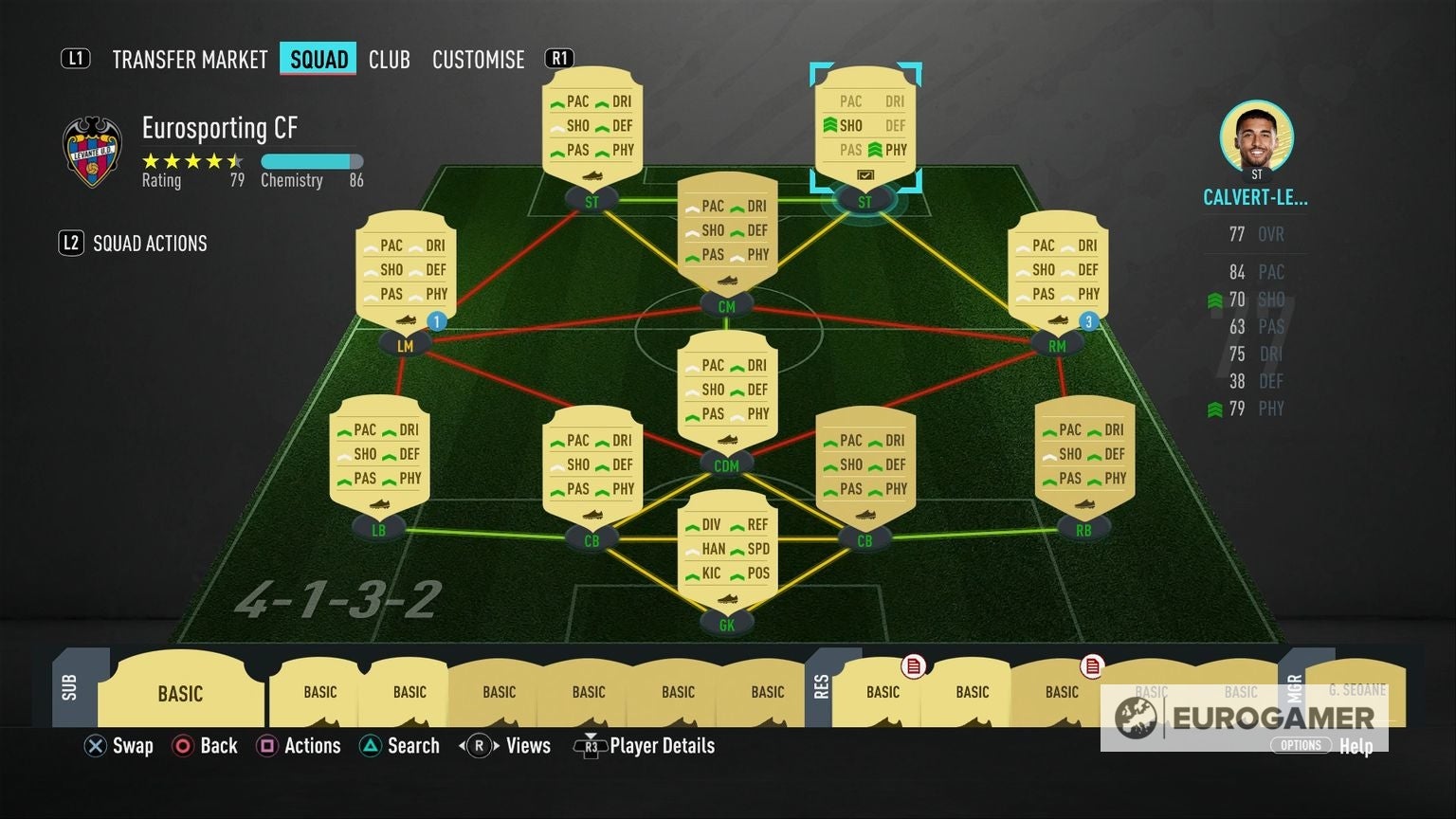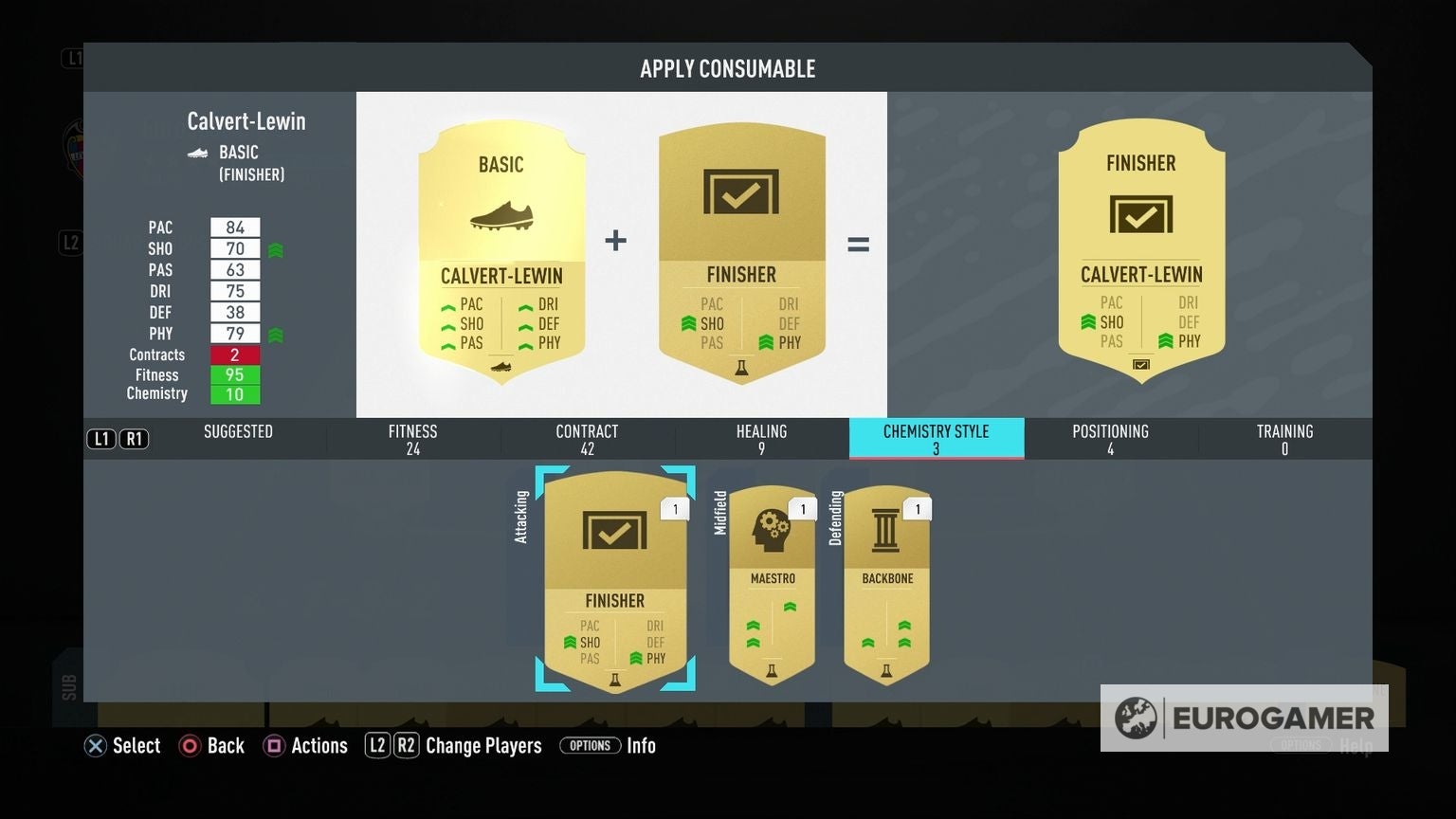As we also dicuss in our main FIFA 20 Chemistry guide, we can’t emphasise their importance enough, with the stat-modifying add-ons able to increase specific attributes by up to fifteen points each, totalling a whopping 90 attribute points, rather than the standard 5 across the board. With that in mind, we’ve put together a quick guide below helping you choose the best FIFA Chemistry Styles for each position but outlining a full Chemistry Styles list, so you know every attribute affected. On this page: To get the added effect of the Chemistry Style attached to your player, that player will need to have an Individual Chemistry - shown on the bar under the player picture in one of the secondary FUT Squad views - of at least 5 out of 10. At 4 out of 10, the attributes will stay the same, and below that all attributes regardless of Chem Style will start to decrease. You can read more on how to increase Individual Chemistry in our main Chemistry guide. The downside is, it’s not made explicitly clear which players and positions these Chem Styles actually suit, mainly due to those bundled stats like ‘Shooting’ not indicating which actual attributes within it - like Finishing or Long Shots - is increased by the Chemistry Style add-on. That means it’s not clear, for example, whether you’d want the Sniper or Finisher Style on your Striker or your Centre Forward. Below, we’ll tackle that problem. Looking for more on FIFA 20? So far we have the key details on the FUT Chemistry explained and a Chemistry styles list and affected attributes, a detailed FIFA 20 Volta mode guide and details on how to earn Volta Coins in FIFA 20 fast, a list of the top FIFA 20 potential wonderkids: the best young players and hidden gems, the full FIFA 20 player ratings and top 100 players, an in-progress FIFA 20 Ones to Watch OTW players list, and a full FIFA 20 Icons list, too. Finally, check out our SBC pages on the Teemu Pukki SBC solution, Josef Martínez SBC solution and Robert Lewandowski SBC solution, as well as pages on FIFA 20 five star skillers, plus the best FIFA 20 goalkeepers, best FIFA 20 defenders, best FIFA 20 midfielders, best FIFA 20 wingers, and best FIFA 20 strikers for an in-depth look at each position. Finally, check out the latest in-forms in this week’s FIFA 20 TOTW, number 40 and our full FIFA 20 Ultimate Scream cards and players list, too. And again, we explain exactly how much stats improve by when you have less than max chemistry in our FIFA 20 Chemistry guide. Also worth bearing in mind is that the Basic Chemistry Style, which is automatically applied to all players which don’t come pre-loaded with a Chem Style of their own, doesn’t increase every single stat when you hit the right amount of Chemistry. Rather, it increases a set group of attributes by a smaller amount than the others, with a maximum 5-point increase in each of the following:
Basic Chemistry Style - Acceleration, Positioning, Finishing, Shot Power, Volleys, Penalties, Vision, Long Passing, Short Passing, Curve, Agility, Ball Control, Dribbling, Marking, Standing Tackle, Sliding Tackle, Jumping, and Strength by a small amount (max. 5 points each).
Likewise, you can also receive a penalty to your players attributes for having a low Individual Player Chemistry rating. In fact, at zero Chemistry, your player will receive a 25-point reduction to every attribute. This scales, depending on just how low your Chemistry rating is. With that cleared up, let’s dive into which Chemistry Style is best for which position in your FIFA 20 Ultimate Team. Attacking Chemistry Styles attributes list: Sniper, Finisher, Deadeye, Marksman, Hawk Midfielders and Hybrid Chemistry Styles attributes list: Artist, Architect, Powerhouse, Maestro, Engine, Catalyst Defenders Chemistry Styles attributes list: Sentinel, Guardian, Gladiator, Backbone, Anchor, Shadow Goalkeeper Chemistry Styles attributes list: Wall, Shield, Cat, Glove Goalkeepers are slightly different from the other positions here, as EA Sports failed to release the specific info for Goalkeeper Chemistry Styles. Not to worry though, as we’re used to being neglected, so here’s some added advice on how to use the cards based on the info we do have:


